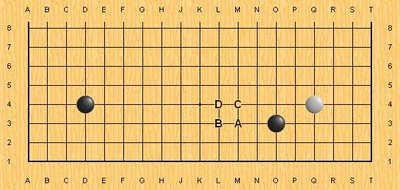
My thanks to all of you who have been patient with my absence. A snafu with the migration of my blog to the
beta release of Blogger caused me to lose all editing capabilities to my blog since August. I could neither post nor even approve comments.
In retrospect, not having access to my blog was to my advantage since I had to deal with a number of developments in my professional and family life. It was, in fact, a good time to take a sabbatical from blogging.
My situation, regretfully, hasn't changed much; particularly at work where I am now undertaking more responsibilities after a departmental reshuffle. It will now be a greater challenge for me to blog regularly; but I intend to keep in touch!
Progress to-date
Many of us play on
KGS and are notably aware of the abrupt bump that our ranks have undergone since
Bill Shubert implemented
CGoban3. My understanding is that these ranks more closely mirror the ranks one would expect to be conferred by the
American Go Association and, perhaps, the
European Go Federation. You can still expect to be somewhat underranked by KGS, but not by too much.
As of today, KGS ranks me as 8-kyu; putting me solidly into its single-digit kyu range. I'm still ranked as follows on the other servers:
Thinking streak
Other folks call them winning streaks and losing streaks. I call them
thinking and
non-thinking streaks.
I once half-joked with friends that I could tell when I was on the verge of a non-thinking streak. I'd usually play slumped in my chair. My mind would be eager to play Go but would be nagged by the distractions of other thoughts (personal or work-related). I would also play rather fast (what
NannyOgg calls
plunk-and-pray) and rely primarily on poorly-developed instinct and short-ranged, shallow-depth tactical rules.
In a non-thinking streak, I would also play with a conscious intent to improve my ranking on a Go server. If I lost a game, I wouldn't review it but would instead quickly start-up another game out of some delusion that my last loss was just due to a minor error or an under-ranked opponent.
"The next game will be different," I'd lie to myself.
The end result is usually a loss, followed by another loss, and another; all in rather quick succession and often on the same day. And quite honestly, there's an increase of anxiety and even desperation as each loss occurs (
"Gnats! What's that loss going to do to my server rank and how many wins will I now need to get to the next rank?!").
It all reminds me of why NannyOgg turned-off her KGS rank indicator.
By contrast, when I'm on a thinking streak, I usually sit straight in my chair. All other concerns in my mind have either been settled for the day or compartmentalized for the future. I want to study the grand puzzles of the board and sometimes place each stone one at a time in the board of my mind.
"How many liberties does this string have?", I ask.
"Will a ladder form there?", I ask.
"What is the best follow-up move that my opponent may try?", I ask.
Rank is of no concern when I'm in a thinking streak. I'm not interested as much as in whether I win or lose than as to whether I can find an opportunity to apply something that I had recently learned or read about. I'm still in a zero-sum match, but it's one in which I first want to experiment and apply.
Comparing these two mental states is very amusing. A non-thinking streak is like a gambler's downward spiral. A thinking streak is a curiousity and analysis quest of a calm and patient mind.
Of course, I'm not saying that there aren't such things are real losing streaks that may occur even when you are playing calmly and thoughtfully. These, however, are most likely to occur when you lack a certain understanding of facet of the game that would allow you to move beyond your current rank. I had been through some of those,
like when I couldn't believe that certain invasions were possible.
In a recent teaching game,
Takeshita (2k) told me that, at my current level, much of my improvement would depend on reading. That only means that further improvement will hinge on a lot of thinking.
Pincering in Enemy Territory
I have a strong tendency to play pincers. I just prefer starting some type of fight early in the game. Eventually, I expect to balance my play with more enclosures and jumps (after I get accustomed to playing on the 3-4 points instead of the 4-4 points).
During an evening Question-and-Answer session with shygost, I asked him about guidelines for low and high pincers. When does one pincer on the 3rd line? When does one use the 4th line?

In the situation illustrated above, shygost cautioned White against pincering on the 3rd line (A or B) as this was playing in Black's territory. In this situation, it's recommended that White consider a pincer on the 4th line (C or D).
 In this situation, pincering on the 3rd line (A or B) is perfectly fine since it's both a pincer and extension. White is playing in her own territory.
In this situation, pincering on the 3rd line (A or B) is perfectly fine since it's both a pincer and extension. White is playing in her own territory.
I assume that neither of these are hard and fast rules. They are only considerations that must be assessed (with regards to how the game might develop).





























